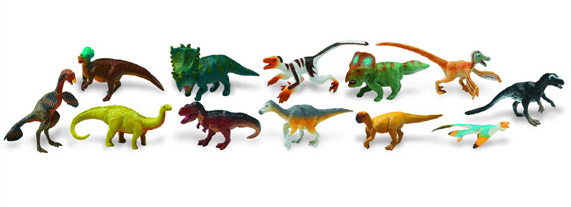The Dinosaurs and Birds
Providing sufficient evidence to permit most scientists to conclude that birds evolved from small, bipedal, theropod dinosaurs is considered by some academics to be the most important achievement of Dinosauria palaeontology. Many people might consider the work on the the theory that birds are descended from dinosaurs to be a modern concept, however, the similarity between the anatomies of birds and dinosaurs was first commented on over 140 years ago.
Dinosaurs and Birds
The English anatomist T. H. Huxley in the 1860s pointed out many common characteristics between the dinosaur fossils found and the fossil of Archaeopteryx that had come to light in the limestone strata of Solnhofen, Germany. In 1861, a complete fossil skeleton of Archaeopteryx was discovered, the feathers could clearly be seen surrounding the animal and it was Sir Richard Owen who organised the purchase of this specimen for what was to become the Natural History Museum – for the huge sum in those days of £600.
For Huxley, a profound supporter of Darwin’s theories as advocated in his book “The Origin of Species”, published in 1859, this Archaeopteryx fossil was evidence of a missing link between reptiles and birds.
However, for much of the 20th century the idea that dinosaurs were the direct ancestors of birds fell out of favour with academics. It was not until John Ostrom, an American palaeontologist published his work on the dromaeosaur Deinonychus in 1969 that the idea was revived. Deinonychus fossils had been known since the 1930s but nobody had got around to properly studying them. Ostrom depicted Deinonychus as an agile, active hunter, turning upside down the consensus view that dinosaurs were slow and clumsy. Ostrom noted the many bird-like features within the anatomy of this fierce predator.
With the amazing discoveries in the 1990s (and they are continuing), from China, most notably Liaoning Province in the northern part of that country, the theory that birds are living descendants of dinosaurs is widely accepted. The accepted link between birds and dinosaurs has altered our perception of these animals generally. Modern reconstructions of dinosaurs show them as agile, active animals with social hierarchies and behaviours thought impossible just a few decades ago.
Feathers and dinosaurs are now accepted and more evidence is being uncovered all the time to support this concept. Recent work on other North American dromaeosaur fossils has led scientists to believe that many types of dinosaur, even young tyrannosaurs were possibly feathered.
The American Museum of Natural History produced a dinosaur tube full of feathered dinosaurs accompanied by other unusual models such as Protoceratops. The models are well designed and feature animals available in larger form from the Carnegie Dinosaur Collection series, but these little models are a testament to how far the scientific study of dinosaurs has come since Huxley.
To view the models: Dinosaur and Prehistoric Animal Models.
Typical Models from the Feathered Dinosaur Tube
Picture credit: Everything Dinosaur







Leave A Comment